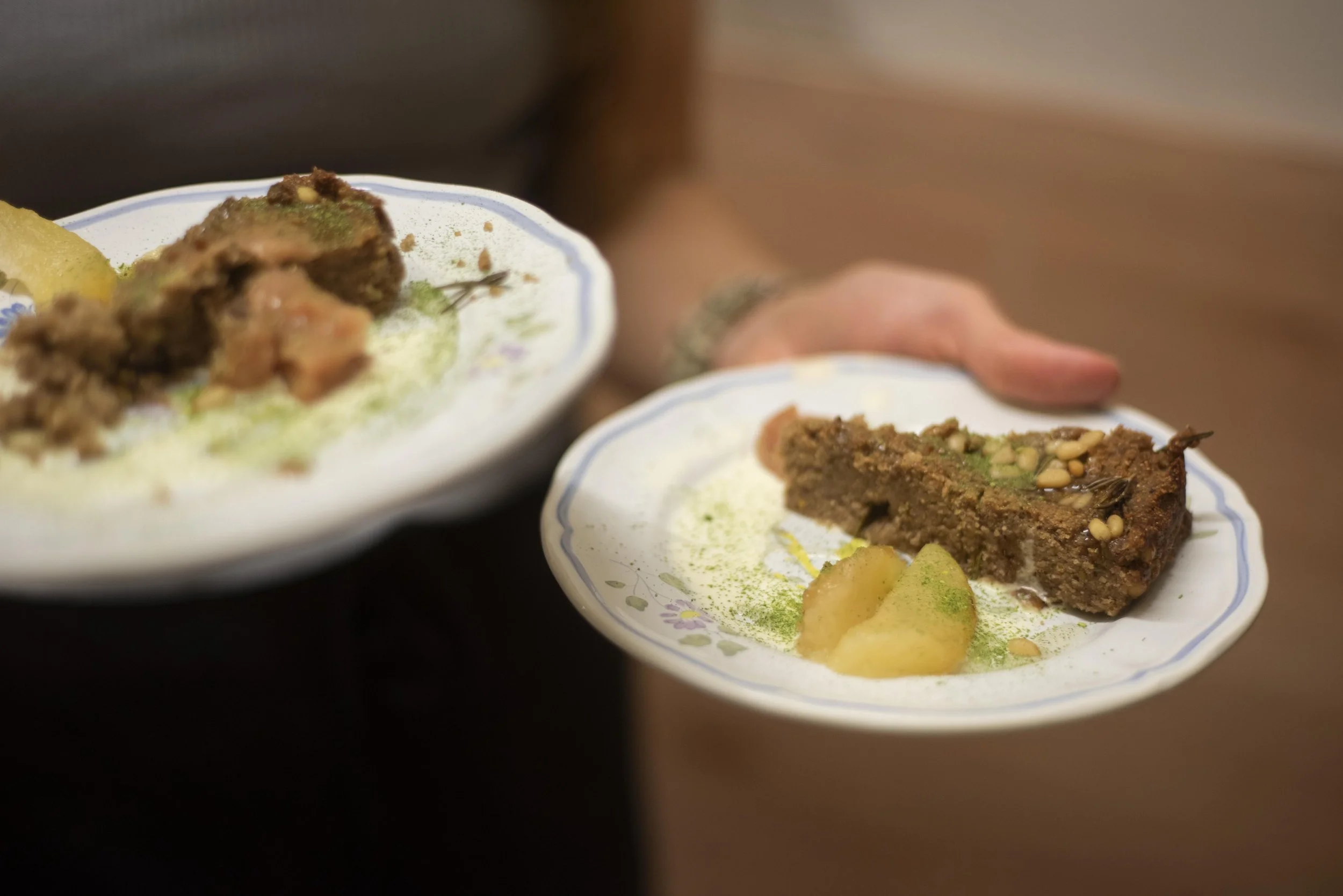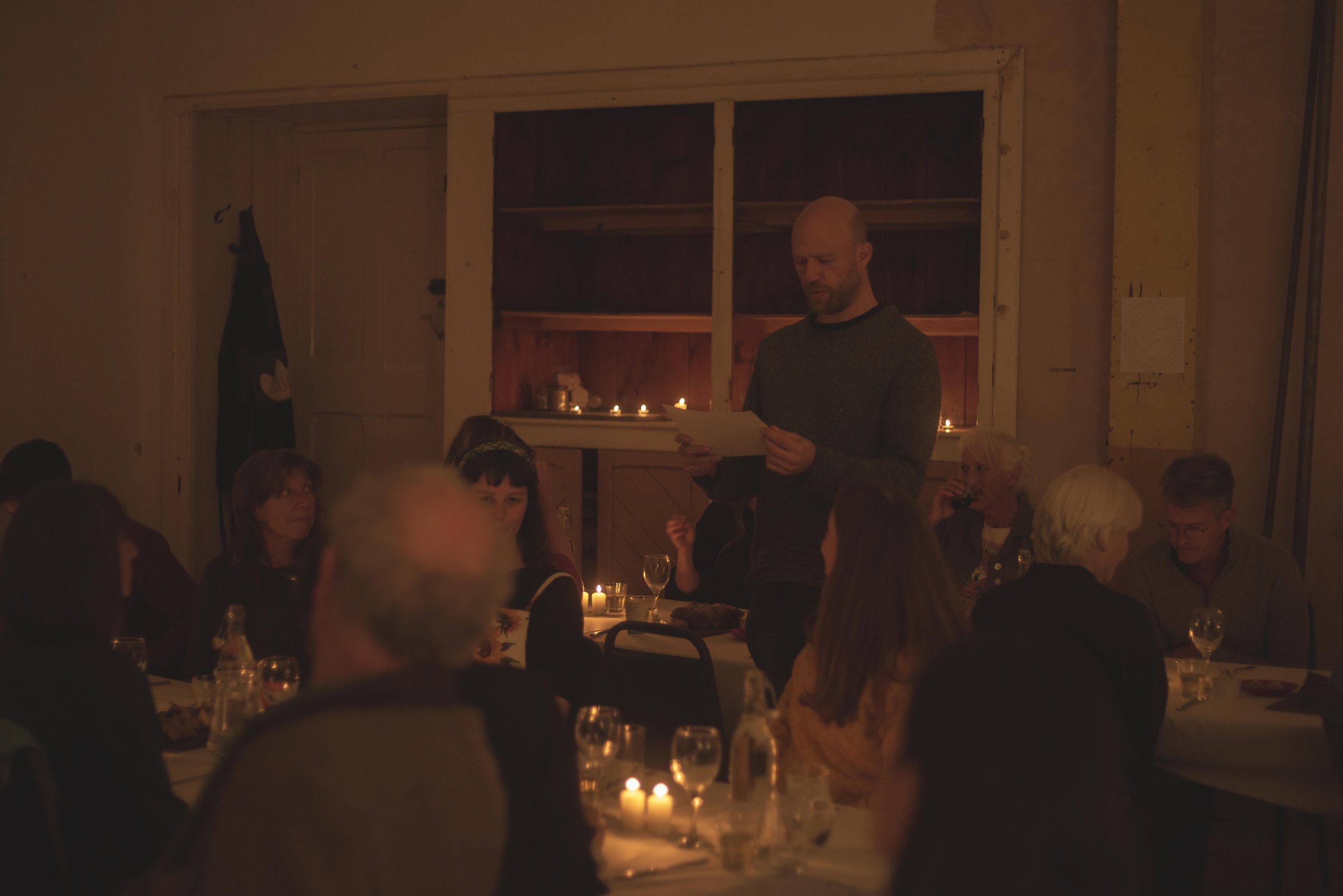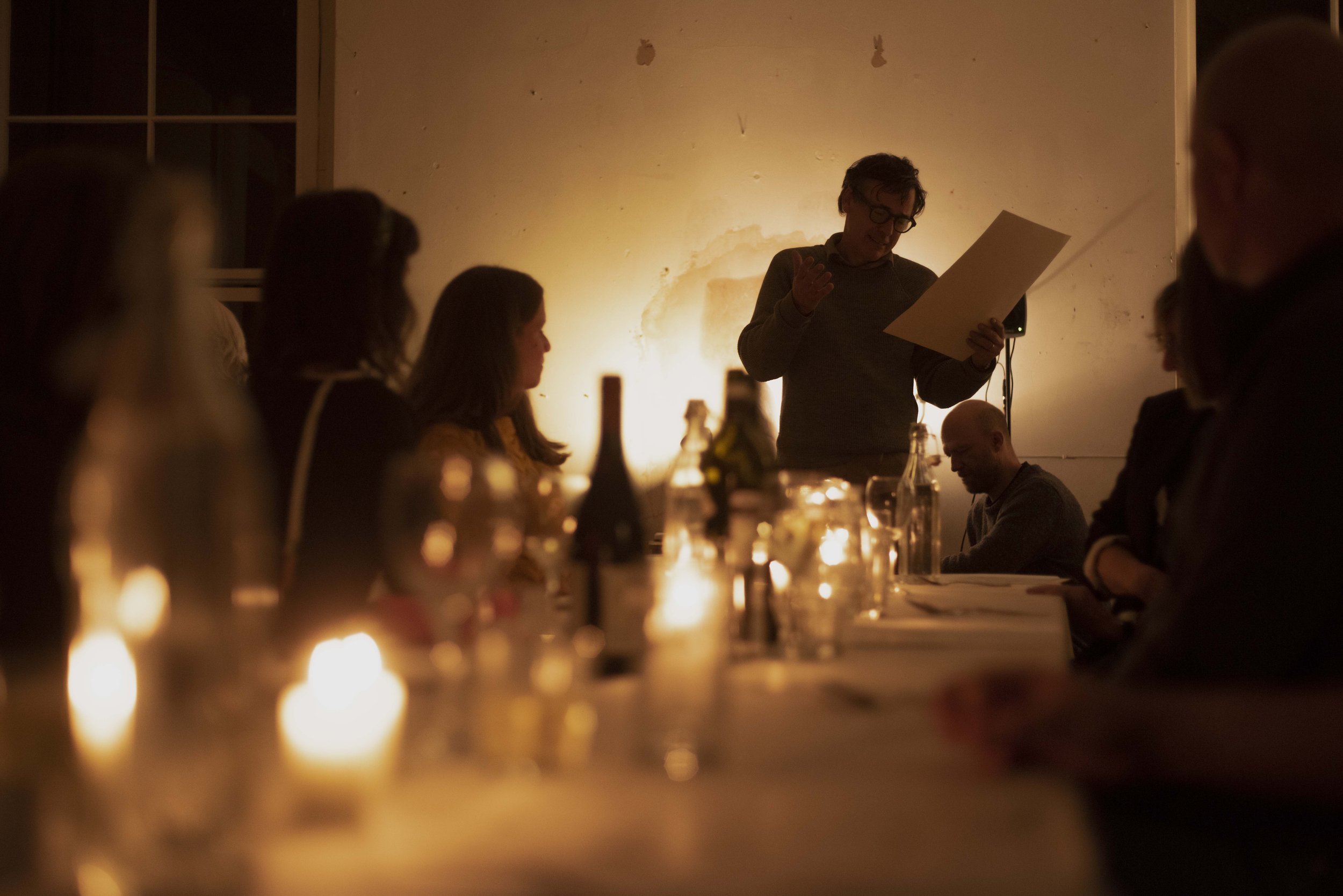red river stannary dinner
The Red River Stannary was a one day event convened in order to share research, poetry and artworks developed as part of Red River: Listening to a Polluted River. The photos below document the meal which artist-chef Mollie Goldstrom presented at the end of the day, during which readings from various texts on the river were made and culinary delights developed based on research into the history of the red river and its environs were shared. The Stannary was held at CAST in Helston Cornwall on Saturday 9th October, 2021.
The event was produced by Field Notes CIC and photographed by Harvey Gorst.
Artist-chef Mollie Goldstrom also created an exquisite menu to accompany the dinner; the texts on the reverse are extracts from a range of sources that influenced Mollie’s approach to the meal. They were read aloud between courses to make connections between the delicious dishes and the history of the river.
The dinner guests processed into the dining room from CAST's screening space in single file, snaking around the tables in a nod to Troon's Tea Treat tradition of the Serpentine Walk.
Here he began what appeared at first to be the primary evolution over again; but before the circle was joined, a slight change of direction converted it into an inward winding spiral. A shout from the knowing ones gave warning to all of the imminent climax. Tighter and tighter were drawn the coils, slower and slower grew the pace, until amid much laughter and shrieks not a few, the leader lifted his flag at arm’s length and stood calmly triumphant in the centre...
Dorinda’s Birthday, Charles Lee
She had her own ritual of butter-making, and many a time I used to curl up in the corner of the kitchen window-seat to watch it. Her hands had to be elaborately washed first, and dipped in cold water to be cool. The wooden tub with the cream in it had to be held at a special angle on her lap. With fixed eye and stern mouth she then began to swirl the cream round, and you mustn't speak to her till the butter ‘came’.
A London Family, Mary Vivian Hughes
...We really can’t be sure when the tradition began or why the buns became so important to the trea treat. Were they always made from saffron and did the size and composition evolve over the years? Now they are remembered as being huge, like dinner plates and “as big as cowpats”. The term “bun struggle” has been mentioned by more than one person and the only meaning seems to be connected to its size and the difficulty of finishing it.
Cornish Tea Treats, Dr Merv Davey, Tony Mansell & Dr Garry Tregidga
The place-name ‘Roscroggan’ (Res-Croggan, 1634) contains the words Res, ‘Ford’, and Crogen ‘(Limpet) shell’ (Thomas, 1967, 192). The ford in question is now represented by the small roadbridge over the stream about a quarter-mile west of and below the round. Does the name perhaps imply the discovery of a midden?
Earthworks in the Parish of Illogan, Michael Tangye
The green cumulus of water starwort blooms like a reflection of the willow as it will be in June, lime nibs flowing into song. I slip into its jacket, light starring skin clothed distantly and cool into the nave of spring and quiet fizz.
[Roscroggan: ford of the limpet shells], John Wedgwood Clarke
It is therefore likely that the mining activity of the medieval period, through both increased metal contamination and the sediment effects of tin streaming, would have driven changes in trout population connectivity and in-river genetic structure. ...Trout from the river Hayle and Red River have very low levels of genetic variation compared to populations with little metal contamination.
Human Mining Activity Across the Ages Determines the Genetic Structure of Modern Brown Trout (Salmo Truttal.) Populations, Josephine R. Paris, R. Andrew King & Jamie R. Stevens
When sod-heaps smouldered ‘neath the evening star, raked into hillocks by the willing hand, how sweet to all the youthful, jocund band, roasted potatoes from the embers red, which glittered in the dust, like mineral sand!’ Beneath the hedgerows they delighted fed, as pleased as if their lunch were richest beef and bread.
Monro, John Harris
It is unlucky to eat pilchards, or, indeed, any kind of fish, from the head downwards. I have often heard persons rebuked for committing such a grievous sin, which is “sure to turn the heads of the fish away from the coasts”. The legitimate process- mark this, all fish-eaters- is to eat the fish from the tail towards the head. This brings the fish to our shores, and secures good luck to the fishermen.
The Drolls, Traditions and Superstitions of Old Cornwall, Robert Hunt
Tin, stannum; Jupiter in the chaldee signifies slime, mud, or dirt; and when the phoenicians came into Cornwall, and saw this metal in its ancient slimy state, they called it, “the mud:” from thence the name, tin, (in cornu-british stean, in latin, stannum) has proceeded, and is still continued.
Mineralogia Cornubiensis, William Pryce
The strata of the earth is a jumbled museum. Embedded in the sediment is a text that contains limits and boundaries which evade the rational order, and social structures which confine art. In order to read the rocks we must become ‘conscious of geologic time, and of the layers of prehistoric material that is entombed in the earth’s crust.’
A Sedimentation of the Mind: Earth Projects, Robert Smithson
On the shelves were ranged vast pans of milk, in various stages from cow to consumer. Foaming in from the milking-sheds, standing for the cream to rise before being sealed, scalded and thick with the deep cream waiting to be skimmed (the most attractive form), scalded and allowed to be drunk ad lib., sold to children at the door for a halfpenny a quart, or more often given to them for nothing. Now I had a special and private permit to go into the sacred dairy and help myself to the clotted cream whenever I liked.
A London Family, Mary Vivian Hughes
Yesterday I cleaned my entire orchard of a noxious weed, ten feet high, which in justice I add was like all weeds exceedingly lovely only a good deal too much of him; the orchard looks hideous thus bared, but it appears I have deserved well of the community and also will eat apples and pears otherwise lost in the dense undergrowth; what the devil I’m to do with all the apples and pears I can’t guess: feed them to the pigs? But I don’t keep pigs. To the wasps? But I don’t love them. Hopeless problem.
Journals and Letters of Stephen Mackenna, Stephen Mackenna
BEHIND THE SCENES







































